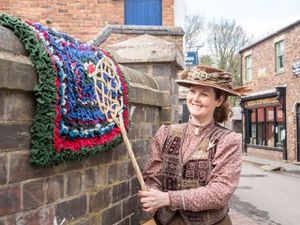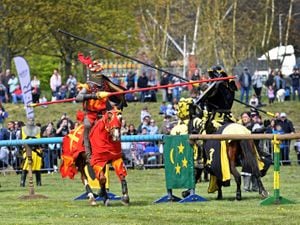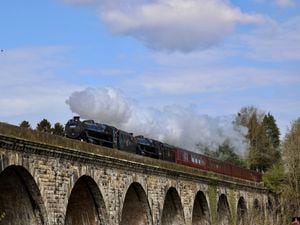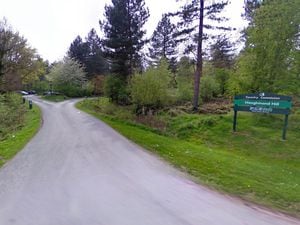Shropshire blessed with array of historic treasures
Shropshire is booming and blessed with an array of treasures from historic country mansions, a Roman city ruins to steam railways and of course the World Heritage Site at the Ironbridge Gorge.
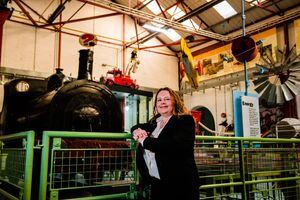
This wealth of attractions puts the county right up there with a sixth place ranking behind only Cornwall, Westminster, Camden, Cumbria and Wiltshire for the sheer volume available to its population. A national league table shows there are18 accredited sites serving a population of 311,380 - a feat which business and tourism chiefs as well as academics want to see fully developed - to benefit its economic and cultural growth.
Door step destinations popular with tourists and residents alike include the Ironbridge Gorge Museums, Shropshire Regimental Museum and Attingham Park, both in Shrewsbury, and hidden gem Sunnycroft, a delightful Victorian villa, in Wellington, which has its furniture and fittings still intact after all these years.
Annually some 500,000 visitors a year hotfoot it to The Ironbridge Gorge Museum Trust sites including Coalbrookdale Museum of Iron that reopened to visitors last month and charts how the remarkable events of the Industrial Revolution changed the world forever. It coincided with the celebrations marking 50 years of the trust, which works to conserving the heritage of the gorge which is internationally recognised as the birthplace of the revolution.
Delighted bosses at Sunnycroft, an intimate National Trust property, welcomed a total of 1,532 visitors to the Holyhead Road site over the 2016 Easter period.
Among those to call in this month were Sue and Ron Carter, both 68, of Wheaton Aston, in Staffordshire. Mrs Carter said: "We come here quite frequently especially if the weather is nice because there is a nice lawn for families to p[lay sports and have a picnic. We bring the grandchildren and play croquet and badminton. It's a really nice place to sit and relax."
Glenys Gaines, 60, of Wirral, was camping in the area with husband Edward, 77, when they visited.
Mrs Gaines said: "We first came here many years ago and I would say that it's improved. We are very impressed with the house. Everything is natural and the volunteers know a lot about its interesting history. The parking facilities are much better than they used to be, but the signs on the main road could be a bit more prominent. If you blink you miss the gate."
A new interactive Nesta map plots the location of over 1,300 accredited museums in England for the first time and it shows that more than half of the population or 55 per cent live within walking distance of at least one. The figures were published by the arts innovation foundation Nesta which created an interactive map with the help of Arts Council England information to study levels of accessibility in different council areas. The date revealed that that some areas benefit from much higher levels of access than others due to historical significance and population density.
Nesta researcher John Davies said: “Museums hold our collective memory and our map shows that a large proportion of England’s population live within close reach of at least one.
"With those easily able to access a museum, but who do not attend, the question for the sector is how to break down barriers to access and engage untapped audiences.”
Sites popular with tourists and residents alike include the Royal Air Force Cosford Museum, Whitchurch Heritage Centre and Bridgnorth Museum.
However, the work doesn't end with Nesta's mapping initiative. In Shropshire the University Centre Shrewsbury (UCS) is helping to keep the museums sector healthy with a postgraduate degree programme and those with a passion for the topic can study the trends and visitor behaviour in depth by taking its MSc in Museums Practice.
Among them is Telford mother Michelle Meeson-White who spends many hours touring the various venues and lists Enginuity at Ironbridge among her favourites.
"I loved taking my children to Enginuity when they were younger. There is lots of things there that kids can experience. They can touch things and see how they work. I would definitely recommend it to other families as a fun place to visit.
"To be honest I like all the venues in this area, the Ironbridge museums and Attingham Park too," Ms Meeson-White said.
"Shrewsbury is a great location as there’s a museum in the town. The site of the old museum still exists, too, and a tour was very illuminating as to why old buildings do not always make ideal museums. We also had tours of Shrewsbury’s Archives and the Resource Centre in Ludlow, as well as plenty of opportunity to look around the castle and military museum there, and to look at the architecture around town in our own time. The proximity to Weston Park and Attingham Park, as well as many other historic houses and sites, make it an excellent location for the course,” she added.
UCS History Programme Lead James Pardoe explains: “This programme has the advantage of employing, as practice-based case study, Shrewsbury and Shropshire, which are rich in popular visitor destinations proudly boasting historic urban cores, state-of-the-art museums, and World Heritage sites.
“Museums Practice students have access to a wide range of resources such as museum services and their collections across the county. There are also strong links to a number of heritage organisations and their resources, including English Heritage and the National Trust.
“Our programme blends theory and practice, with plenty of opportunity for our students to take part in field studies gaining ‘hands-on’ experience, and to participate in research projects with real-life outputs.”
As well as Museums Practice, UCS also offers related postgraduate courses in sustainable heritage practice and military history, meaning the University will continue to support Shropshire’s booming museums sector with well-trained professionals who have an in-depth understanding of this unique market.
Mary Mckenzie, Shropshire Council’s acting museums and archives manager, said: “It’s great to see the number of museums in Shropshire recognised in this national survey. Its position as sixth in the national table for the number of museums, reflects both local authority-run museums, and also the strength of independent museums across the county.”
Matt Hancock, Minister for Digital and Culture, said: "Through their unique collections, expertise and special place in local communities, museums make a vital contribution to the nation’s cultural life. This online map highlights the huge variety we have in this country. One aim of our ongoing Museums Review is to ensure that we encourage a more diverse audience to visit museums. I hope the map will encourage more people to go and explore the fantastic museums and galleries on their doorsteps.”


